If you enjoy wagashi (Japanese confectionery) and wish to make them at home, this post shows you how to make Shiratama Dango that are found in many Japanese sweets. Chewy & gooey in texture, this type of mochi uses glutinous rice flour made from shiratamako or mochiko.
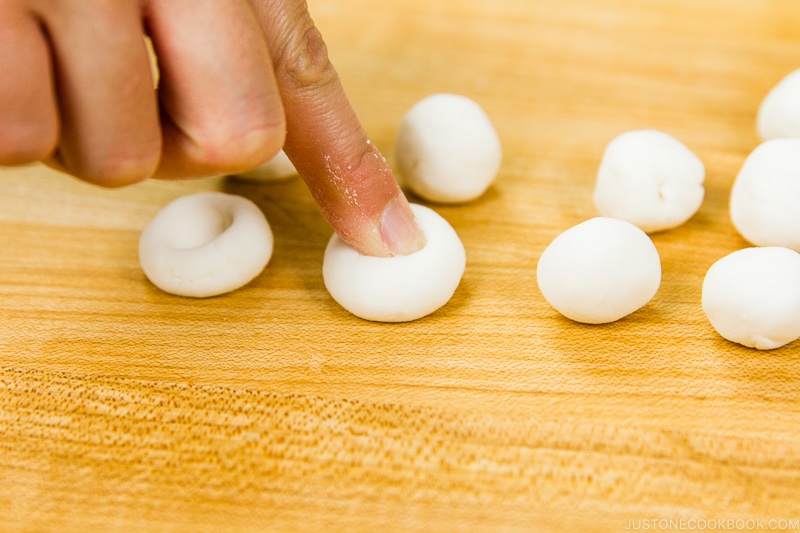
Shiratama Dango (白玉団子) or Japanese mochi balls is a type of mochi and we use glutinous rice flour to make it. This glutinous rice flour is made from mochigome (もち米/糯米) and it’s different from other types of glutinous rice flour because mochigome is Japanese short-grain rice (other kinds may use long grain rice, etc).
There are two types of glutinous rice flour you can use: shiratamako (白玉粉) or mochiko (餅粉) (or combine both). I recommend using shiratamako because mochi made with shiratamako has a very smooth, more refined, and elastic bouncy texture. And it also tastes better in my opinion. Also, shiratamako is much easier to use compared to mochiko. You can read a little bit more details on these glutinous rice flour on shiratamako page.
How To Use Shiratama Dango
Shiratama Dango is often served in a bowl or included in other Japanese desserts called wagashi (和菓子, Japanese confectionery) such as Anmitsu or Zenzai (Oshiruko).
Here’s how to make Shiratama Dango. A lot of readers told me it’s much easier to find mochiko in grocery stores, so I’m using mochiko in this video. However, the recipe below includes measurements for both mochiko and shiratamako and the methods are the same.
Recipes with Shiratama Dango
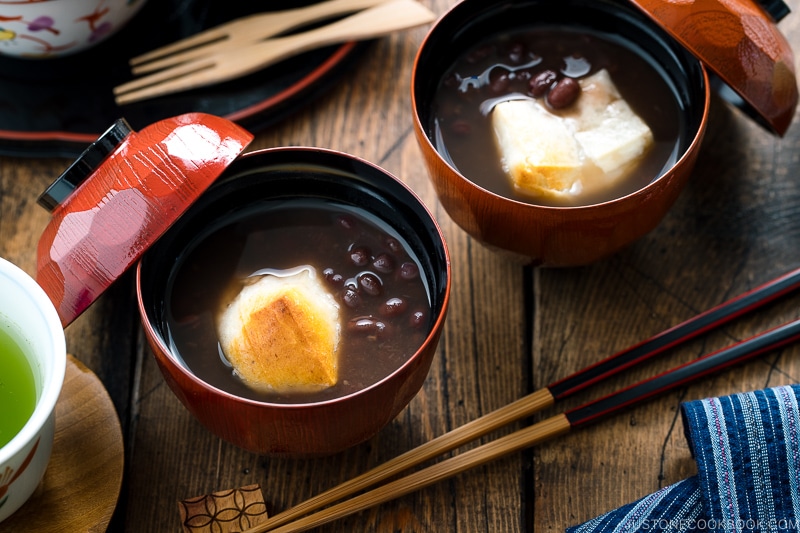
Wish to learn more about Japanese cooking? Sign up for our free newsletter to receive cooking tips & recipe updates! And stay in touch with me on Facebook, Pinterest, YouTube, and Instagram.
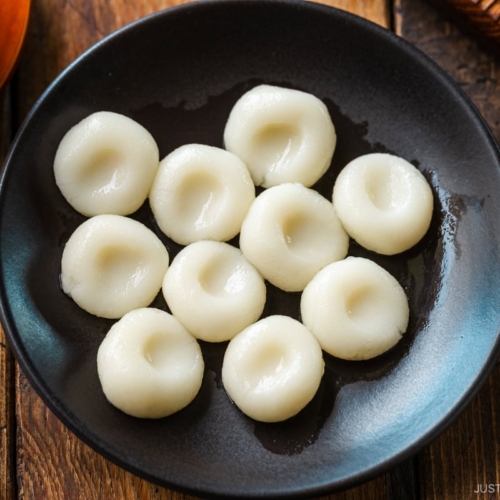
Shiratama Dango
Ingredients
- 7 oz shiratamako (glutinous rice flour/sweet rice flour) (one 200-g bag; roughly 1⅓–1⅔ cups; you can buy on Amazon; you can substitute with mochiko)
- ¾ cup water (if you use mochiko, use less water)
Instructions
- Gather all the ingredients.

- Add 7 oz shiratamako (glutinous rice flour/sweet rice flour) to a large bowl. Gradually add ¾ cup water and mix with chopsticks or a silicone spatula until well combined. You may not need to use all the water. If you have accidentally added all the water at once, quickly place a paper towel over it and absorb excess water before mixing. If you already mixed it in, you'll have to add more shiratamako.

- Use the dough to pick up crumbs in the bowl. Knead the dough until the texture of the dough is like an “earlobe.”

- Then, roll it into a nice smooth ball and cut it into quarters. Roll out each piece into a log.

- Cut the log into small pieces.

- Roll each one into a ¾-inch (2-cm) ball. You should be able to make about 30 balls.

- Use your index finger to make an indentation in the center, about a scant ½ inch (1.3 cm) thick. This will help cook faster and less doughy in texture after cooking.

- Add the Shiratama Dango to boiling water.

- Once they float to the surface, cook for 1 minute.

- Remove from the water and soak in ice water to let them cool. Once cool, transfer to a plate or tray. Now shiratama dango are ready to use.

To Serve
- Serve the Shiratama Dango in your dessert.

To Store
- Shiratama Dango are soft and chewy within 30 minutes after they are made. If you are not using them right away, keep them in water and store in the refrigerator. Shiratama Dango will become hard, so you need to reheat them in boiling water to soften them before serving.

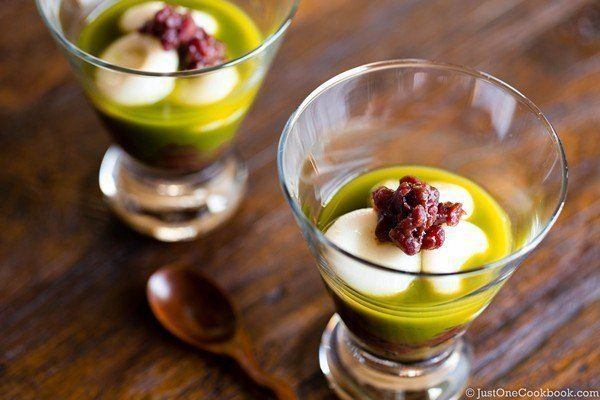
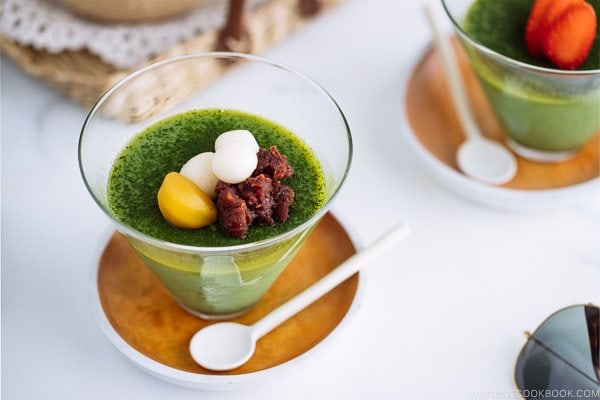
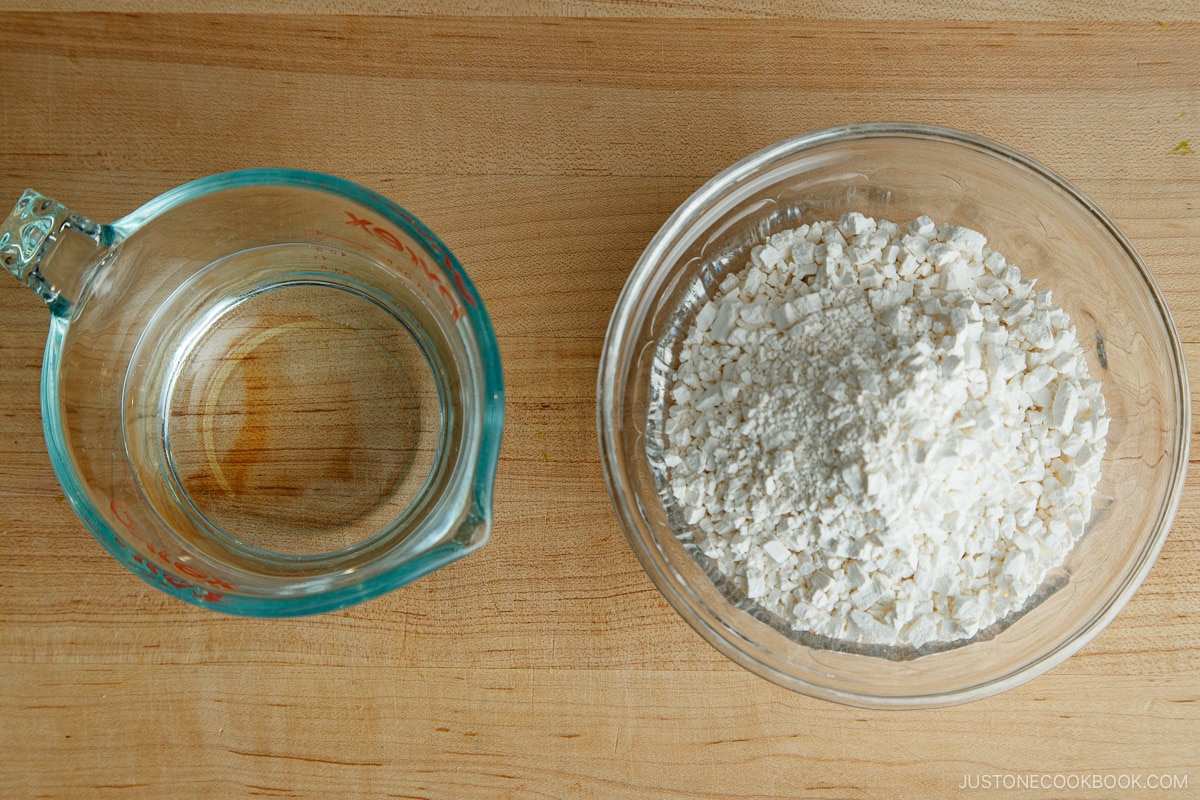
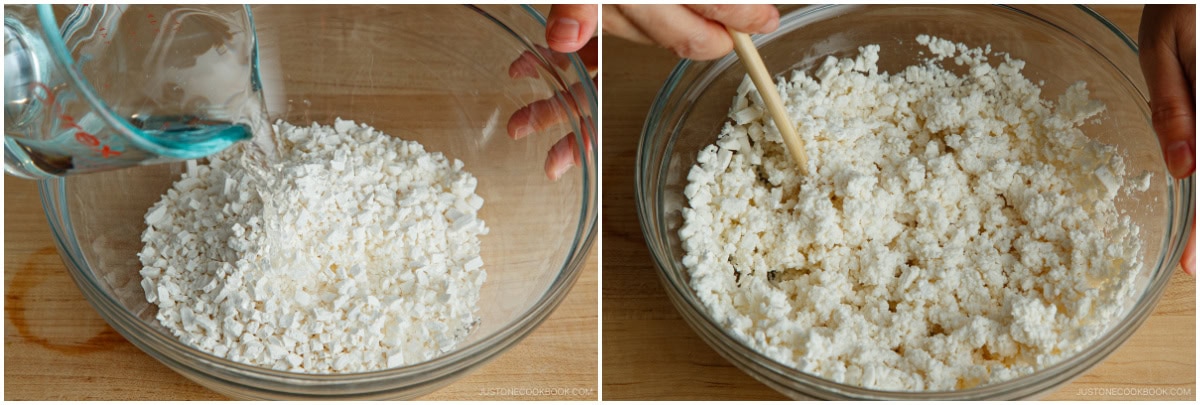
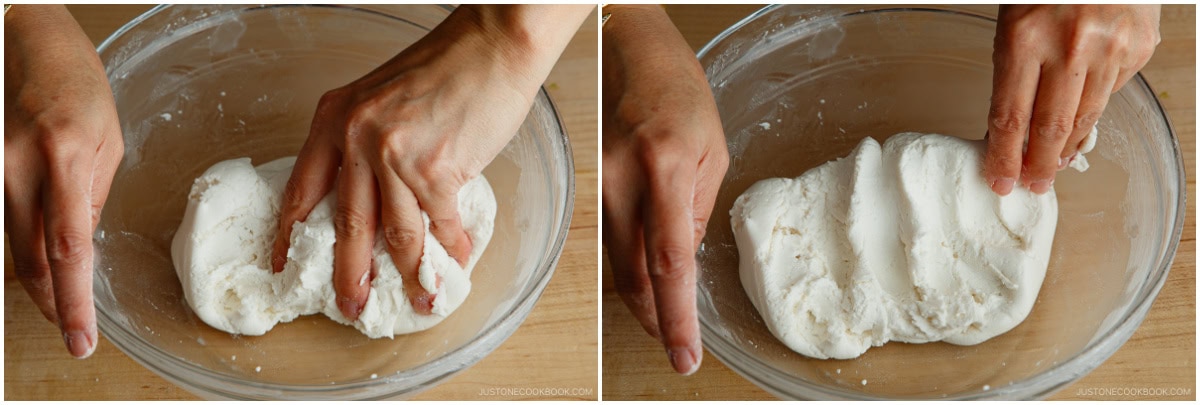
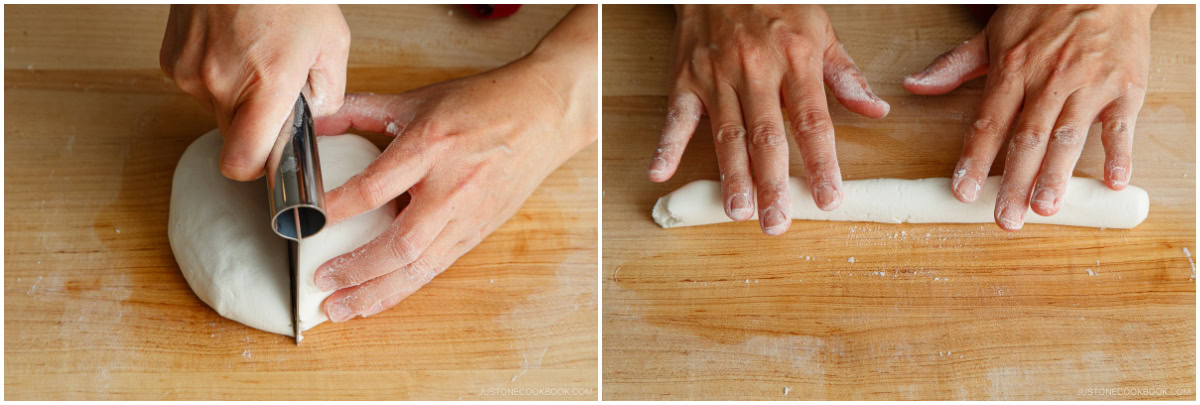
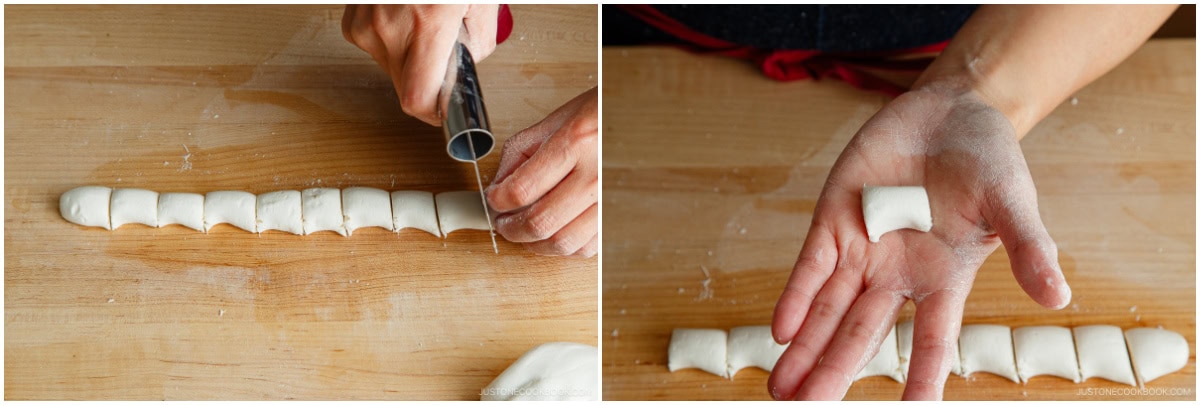
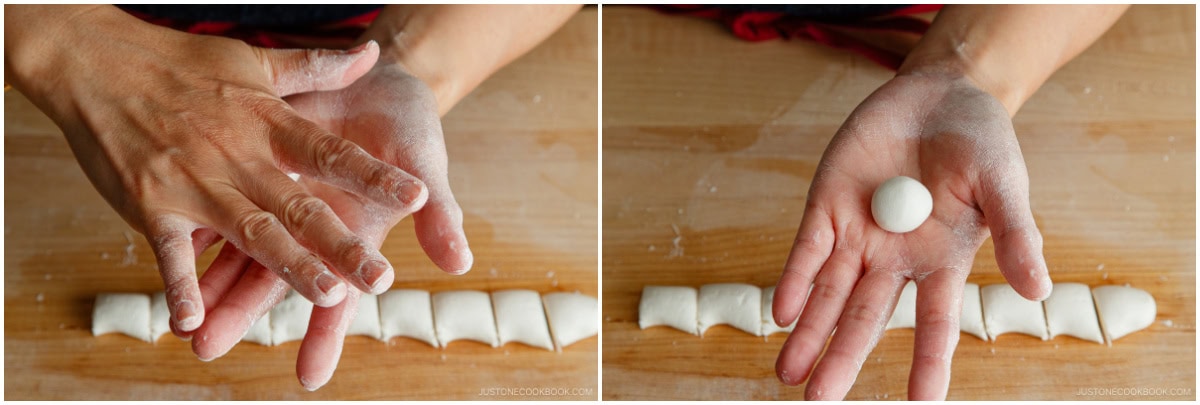
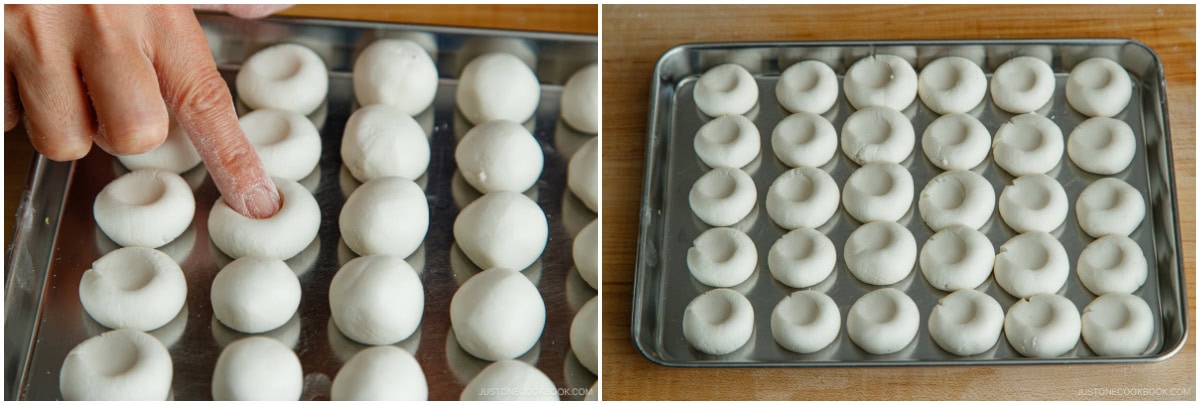
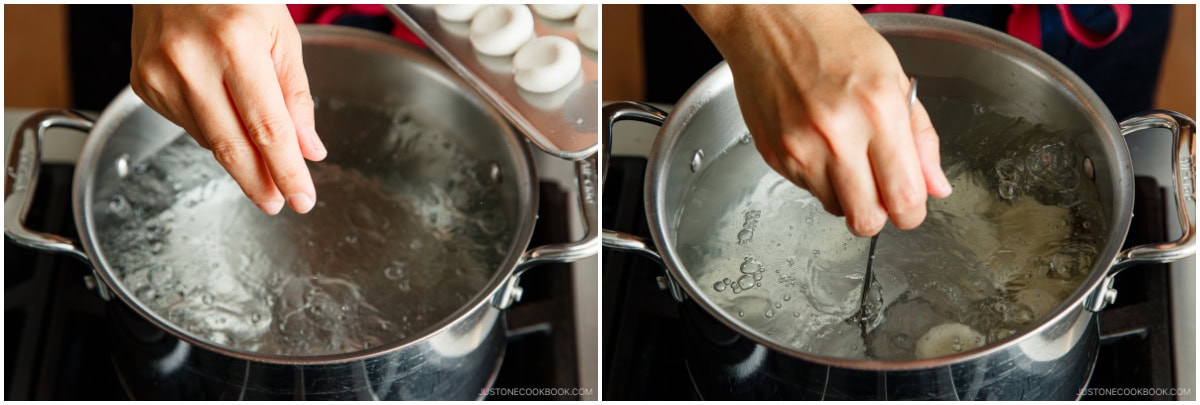
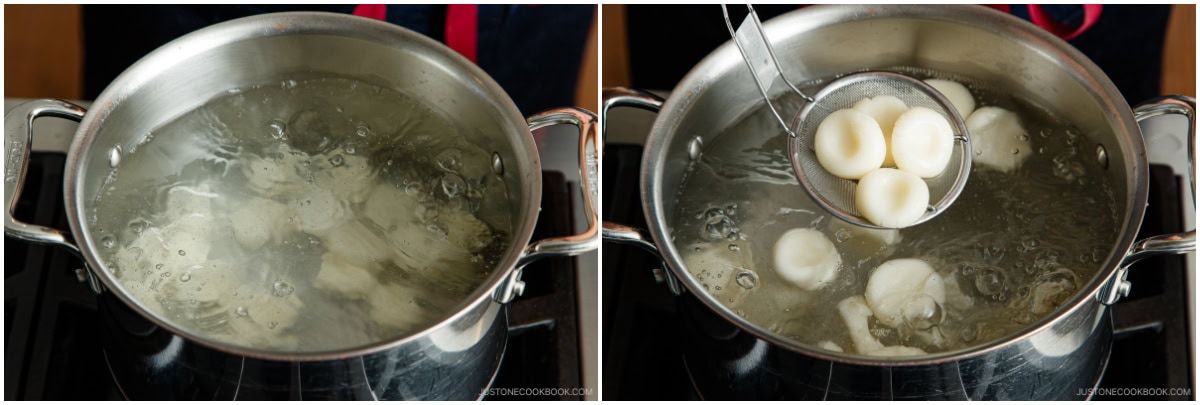
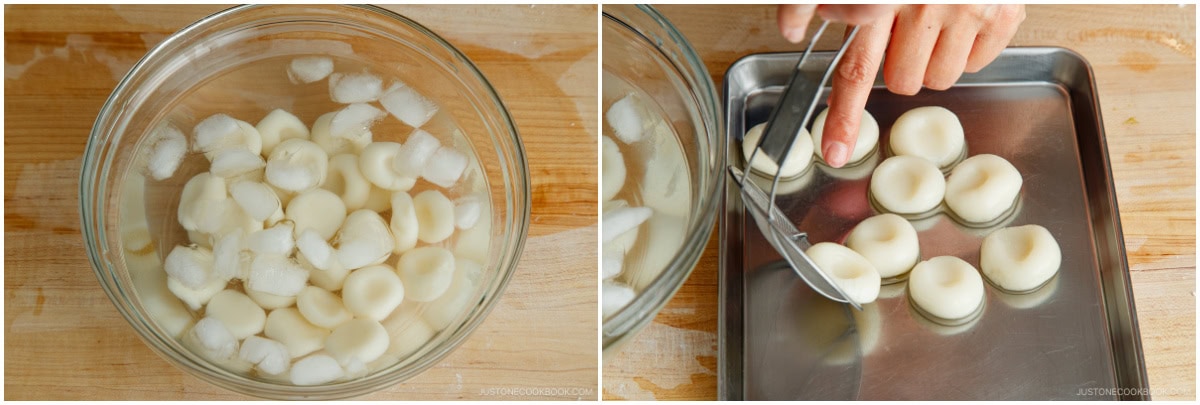
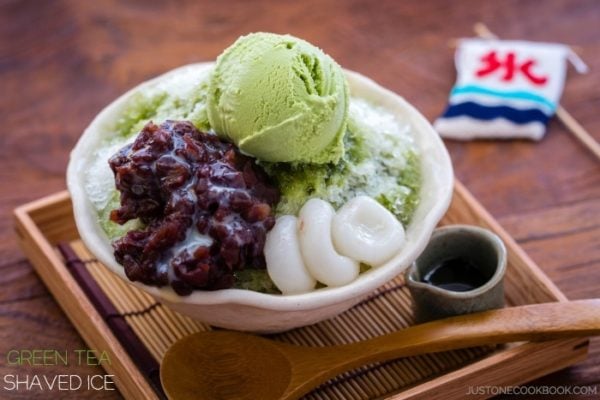











Hi. Regarding the water, is it room temperature water? Cold water? Or hot water?
Hello, Kittah. Thank you so much for taking the time to read Nami’s post and try her recipe.
For this recipe, you may use room-temperature water. 🙂 We hope this helps!
Hello, Kittah. Thank you so much for taking the time to read Nami’s post and try her recipe.
For this recipe, you may use room-temperature water. 🙂
We hope this helps!
Hi Nami! I hope to bring shiratama dango as a topping to my mango pudding for an outdoor, summer potluck. If I don’t have access to a microwave or a stove, is it sufficient to just warm the dango up in hot water (e.g. from a thermos)? Would dango made from mochiko be a more reliable choice? Love all your recipes!
Hello, Sarah! Thank you so much for taking the time to read Nami’s post and try her recipe!
If you can find them, Nami recommends Shiratamako.
In terms of storage, Shiratama Dango becomes hard if not kept in water.
When it becomes hard, it must be re-cooked in boiling water or the microwave. Putting them in hot water may not be effective.
What about putting them in an airtight container with water and putting them in the ice box?
We hope this helps!
Can these be made in bulk and frozen? If so, should I cook them first and then freeze?
Hi Tabby! Thank you for trying Nami’s recipe!
Yes. Shiratama Dango can be frozen for up to one month in a zip lock bag or other containers. (Just Shiratam Dango, and no water in the bag) Make sure the Dango in the bag have enough space between them so they don’t stick together.
To reheat, please place them in boiling water, warm them up, or put them in a bowl of water and microwave them.
We hope this helps!
I was finally able to get my hands on shiratamako, so I could compare it with the mochiko. The texture is soooo much better! I like the mochiko, but it just doesn’t compare!
Hi Miki! We are so happy to hear you were able to get Shiratamako and compare the taste!
Thank you very much for trying Nami’s recipe and for your kind feedback!